Physicians' Gallery Newsletter
Updates on upcoming events, exhibitions and online stories
Empowering medical excellence, shaping healthcare futures.
This blog was developed to accompany the exhibition Hooked: 500 Years of Addiction (30 May 2025 - 13 February 2026).
Prohibition was enacted into law in Canada, Norway, Finland and the United States. Despite strong lobbying, no similar legislation was passed in Britain. A series of mostly unsuccessful laws were passed in Britain in the late 1800s with titles like the ‘Habitual Drunkards Act’ and the ‘Inebriates Act’.
The big change came during the First World War, when pub opening hours were dramatically reduced and many pubs permanently closed. Restrictions were also placed on the quantity of alcohol provided to soldiers by the British Army. Civilian and military consumption of alcohol dramatically reduced. Deaths from cirrhosis of the liver dropped to a third of what they had been at the start of the war. These new restrictions remained in place even after the war had ended.
Anti-tea and coffee spokespersons had once decried those drinks as creating ‘tea mania’ and ‘coffee drunkards’. Now the Temperance Movement advocated for more coffee shops and tearooms as an alternative to pubs.
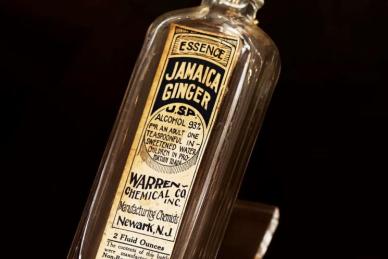
Prohibition was enacted in 1920 in the United States. The sale of alcohol became illegal nationwide, with the exception of patent medicines like Jamaica Ginger. This medicine was intentionally made with harsh surgical spirit and large quantities of ginger to make it unpleasant to consume.
In the 1930s a large number of users of Jamaica Ginger were afflicted with a paralysis of the hands and feet that quickly became known as Jamaica ginger paralysis or Jake paralysis. A manufacturer of the product had begun to include a chemical plasticizer usually used in paint. There were tens of thousands of victims, and the incident was so high-profile that several popular blues songs were written about it, including Jake Walk Blues, Jake Walk Papa and Jake Liquor Blues.
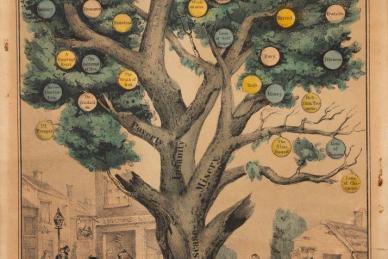
Nathaniel Currier and his company Currier & Ives sold prints such as this one by the thousands. Based in New York City, Currier captured the sentiments of 1800s America. The images were all hand-coloured by an assembly line of female artists – each worker being responsible for adding a single colour. Many of his prints had a moral message, with titles such as The Drunkard’s Progress.
The print on display here also has a sister print, titled The Tree of Temperance. That image showed all the benefits for those who abstained from alcohol – including ‘love’, ‘riches’, ‘courage’ and ‘hope’. This print, by contrast, shows the perils of indulgence, from illustrations of a woman being thrown out of her home and two drunk men fighting, to ‘degradation’, ‘gambling’ and ‘idleness’.
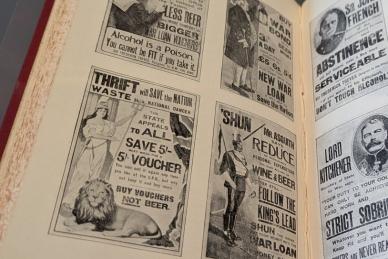
Army life for a long time was associated with heavy drinking. Monotonous barracks life, often far from home, with unappetising food and uncomfortable quarters led soldiers to look for respite where they could. This frequently meant turning to tobacco and to drink. Insubordination and crime often followed. In an attempt to combat this, some commanders began to supply their stationed troops with cricket equipment, games rooms and books. The temperance movement developed an increasing following in military circles.
With the outbreak of war in 1914, temperance leaflets and posters flew quickly off the presses, some of which are reproduced in this volume. ‘Don’t ask me to take a drink’ pledge cards were issued to new recruits. The king, the prime minister and military leaders were vocal in their support for wartime teetotalism.
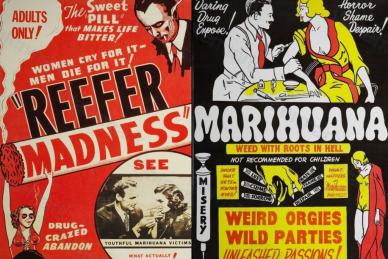
Prohibition of alcohol in the United States created a significant market for alternatives, such as cannabis. When Prohibition ended in 1933 an anti-cannabis movement quickly developed, where ingrained prejudices combined with economic depression and a sensationalist media. Cannabis use was portrayed as eroding traditional American values. The imagery used was often racist and anti-immigrant and crackdowns on cannabis use disproportionately targeted minority communities.
Anti-cannabis propaganda films, like Reefer Madness and Marihuana (both released in the mid-1930s) played a major role in shaping public opinion. These films showed cannabis users as violent and depraved. Henry Anslinger, the first commissioner of the newly created Federal Bureau of Narcotics, described cannabis as ‘an addictive drug which produces in its users insanity, criminality, and death’. Congress passed the Marihuana Tax Act in 1937 which effectively criminalised cannabis.
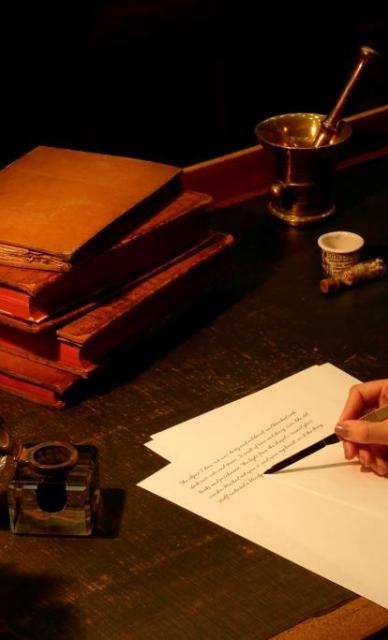
Updates on upcoming events, exhibitions and online stories